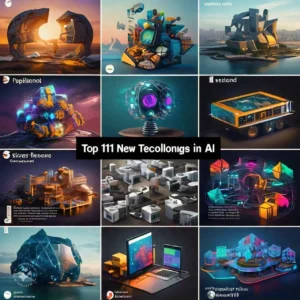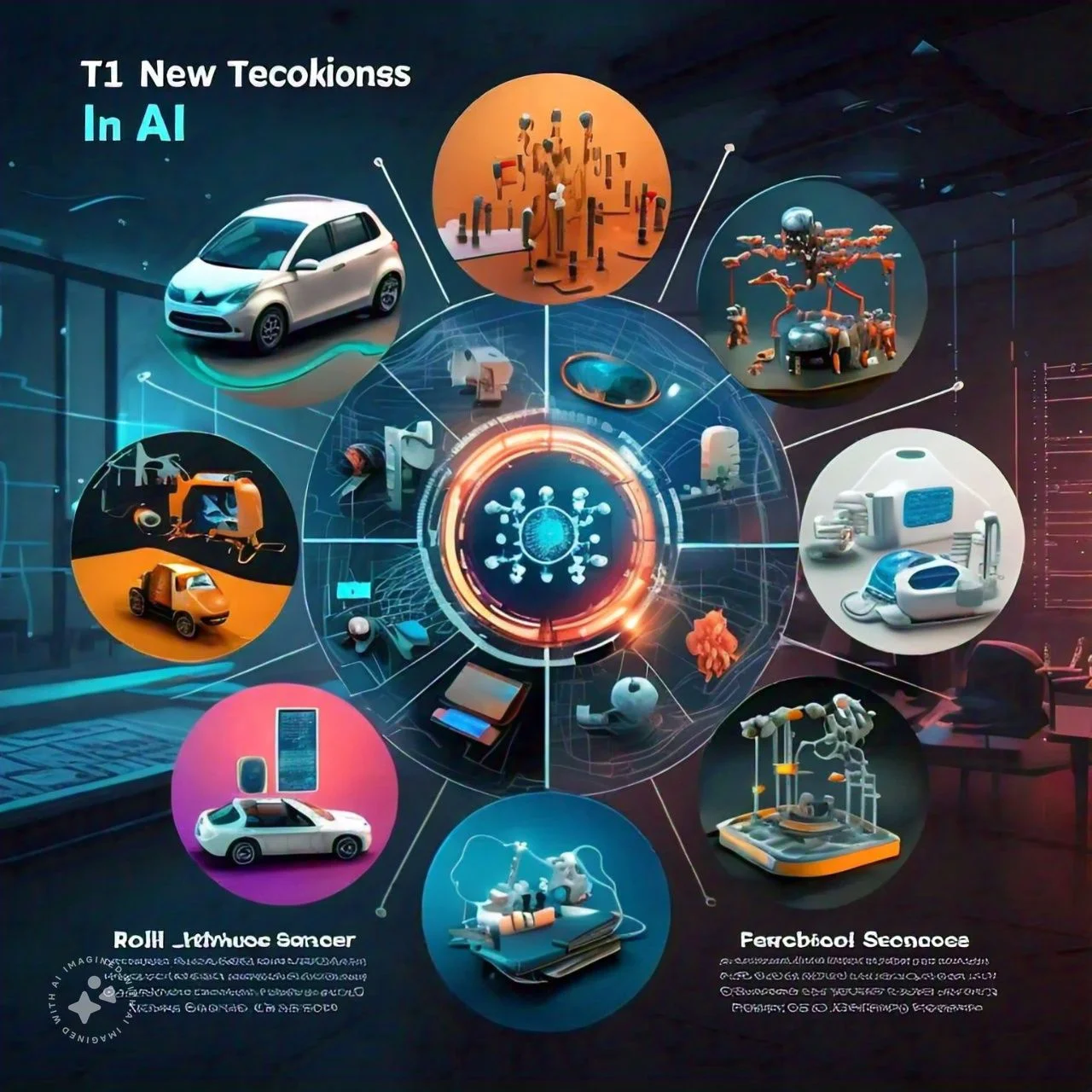Top 11 New Technologies in AI: Exploring the Latest Trends
Artificial Intelligence (AI) is an amazing development that changes our life and work in fantastic ways. Those problems that some years ago were thought of as unsolvable are now made available. With regard to these developments, the debates are ongoing. However, corporations should be in the list of the top contenders by using creative new artificial intelligence (AI) technologies to improve the standards of the modern world, today.
AI is everywhere and now it is no longer a part of the head of the clouds by showing up in our daily lives. If you are holding your phone, surfing the Internet or trying to buy some grocery products, AI has its effects. The IT area has also undergone significant changes because of artificial intelligence, with web developers, UI/UX designers, and app programmers having to adapt to the new reality.
In the article below, we will provide the details of new artificial intelligence (AI) technologies, go through the up-to-the-minute trends and features, and, at the same time, deal with how companies can successfully handle AI. Boosts in natural language processes (NLP) and Generalized Predictor and Transformer (GPT) technologies in relation to sales and marketing are some of the great reasons to take those courses into the future era. The eloquent discourses, though, shall not leave aside statistics, but on the contrary, shall speak of them. New companies will become profitable overnight by buying smart AI innovations, and we will be there to witness and give tips to the new guys starting up with the same online tool.
General Statistics on New AI Technologies

Artificial Intelligence (AI) has found its way through and is now universally impacting essential sectors like health, education, banking, and trade. Here are some stats that can help you figure out how the industry has changed because of AI:
-
- The AI global market would be worth $1,345.2 billion by 2030. It would have a compounded annual growth rate of 36.8% between 2023 and 2030 (MarketsandMarkets).
-
- In 2022, the global corporation made an investment of about $92 billion in AI (Statista).
-
- 80% of the chief executives believe that they can use automation in the decision-making of any business (Gartner, 2022).
-
- While AI is expected to create 70 million jobs worldwide by 2030, it will displace 20 million, still resulting in a net gain of 50 million jobs (World Economic Forum).
-
- Of all executives that are content with the slicing through technology generative AI had over the productivity of their staff, that is 47%, and the ones that are going to incorporate AI more in the coming year are 44% (LinkedIn US Executive Confidence Index Survey, June 2023).

These numbers can be seen as proof that the development of AI is stepping into the direction of success. More than that, we shall investigate the latest data and the cutting-edge AI technologies that are bound to alter most areas.
1. GPT-3.5/GPT-4
GPT (Generative Pre-trained Transformer) models have skyrocketed to the top within the field of AI these days. The entire history of chat-bots from the humble example of ELIZA from the 1960s to today’s more advanced ones will blow your mind completely.
GPT-3.5, with 175 billion parameters, is a simple way to say that the model was able to understand and generate very human-like text. Just imagine GPT-4 that has a bigger bulk of its parameters and is capable of handling a completely new language or even better generation capacities.
Firms are already checking how GPT-4 can be used in new ways. They are implementing exciting and innovative ways to deliver services, for example, the recent addition of GPTs, the ChatGPT Store, and GPT-4 Turbo by OpenAI CEO Sam Altman that broadens the range of opportunities for AI applications.
2. Generative Adversarial Networks (GANs)
GANs, the network that was introduced in the year 2014, has brought in a significant change in the field of generative modeling. This network is made up of two distinct parts which include a generator and a discriminator. The Dr. Seuss worlds GANs of BigGAN has had ten billion words as its place card equivalent to Girlfriend names in a reproductive situation.
Some of the GANs’ best applications are:
-
- Image super-resolution
-
- AI-generated artwork
-
- 3D modeling
-
- Video generation
AI generative market is estimated to soar to $136 billion by 2031. At the same time, the network will be barely able to notice the heavy lifting at the background of the AI domain (Statista).
3. Explainable AI (XAI)
Explainable AI’s primary goal is to create AI models that are more transparent and interpretable. XAI methods like decision trees, linear models, rule-based systems, are insightful ways into the models that make inferences.
The worldwide XAI market is foreseen to reach $1.2 billion by 2027, which is going to be provoked by the high acceptance in definite areas like healthcare, finance, and manufacturing.
4. Natural Language Processing (NLP)
NLP was introduced a lot of years ago (1950s) and, in the meantime, it has been through significant development. With the arrival of deep learning tools like GPT and BERT, NLP has never been closer to a state-of-the-art approach in leading NLP tasks.
The interaction of NLP consistently demands a certain set of functions for such entities as computers, gadgets, and electronic systems for their users. An application based on NLP is suchlike a virtual assistant that can serve in the order of twenty-five billion dollars company by the year 2024
5. AI in Healthcare
AI is extreming healthcare by efficiently providing the major sections of better patient care, diagnosis to treatment. The prime applications of this innovation include:
-
- Medical image analysis (the international market is associated with growing to 8.66 billion by2027) along with a higher degree of accuracy than before.
-
- Disease diagnosis (e.g., 94% accuracy in the mammograms and the detection of the breast cancer).
-
- Drug discovery
-
- Telemedicine (the market is forecasted to grow somewhere around 286.22 billion by 2030).
6. Biometrics
Progress in the big data sector has led to the exponential growth of biometric technologies, and by 2027, their market is expected to exceed $85.96 billion. Fingerprint recognition is one of the most preferred forms of biometric authentication.
-
- Fingerprint recognition
-
- Facial recognition
-
- Behavioral biometrics
-
- Voice recognition
7. Reinforcement Learning
Reinforcement Learning (RL) opens the doors for machines to experience learning while being in contact with the world. The tasks touched upon include:
-
- Autonomous systems (self-driving cars, robotics)
-
- Gaming AI
-
- Supply chain management
-
- Energy efficiency optimization
-
- Financial trading
8. Predictive AI Analytics
The predictive use of AI analytics by combining data science with the artificial intelligence of machine learning and the utilization of statistical models has been quite productive. Key applications comprise the following:
-
- Maintenance of the machinery in the industrial execution
-
- Personalized marketing
-
- Financial risk assessment and fraud detection
-
- Optimization of investment portfolios
9. Chatbots and Virtual Assistants
These new AI services will also help the workforce be more productive, they will allow the workers to work 24/7 regardless of the department they are in, they will help the workers to develop meaningful relations with other workers, and they will facilitate the workers to communicate in a language that is understood by everyone.
-
- 24/7 customer service
-
- Enhanced user experiences through personalization
-
- Rolling out multilingual support
-
- Cutting the time for some business processes
10. AI in Sales and Marketing
AI is transforming the sales and the marketing sectors through:
-
- Hyper-personalization of the marketing campaigns
-
- Accurate sales forecasting and lead scoring
-
- Marketing automation
-
- Customer behavior analysis
11. AI in Data Analytics
Artificial intelligence is reshaping the data sector by:
-
- Streamlining the data processing activities
-
- Imagine the predictive analytics better
-
- Enabling personalized data deck and the display of summarized reports
-
- Unearth the hidden patterns and discoveries in massive datasets
Given that AI is still growing, the companies who venture into these new technologies will not just be successful but will also rule in a fiercely competitive environment. You will be able to harness the power of AI through the assistance of our experienced AI developers and strategists to become an innovator, who is running a tight ship and delivering an enhanced customer experience.


[…] a pleasure to welcome Artificial Intelligence AI supporters! Are you eager to immerse yourself in a world of artificial intelligence? Then you are in for an unbelievable thrill! We are going on a trip to the most innovative AI […]